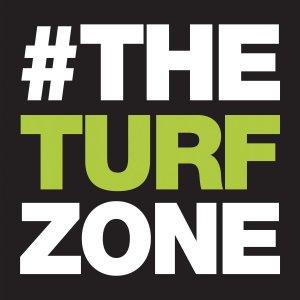The Turf Zone Podcast

Pennsylvania Turfgrass Council – Consider the Source: How & Why Tissue Testing Delivers
Pennsylvania Turfgrass – Max Schlossberg, Ph.D., Assoc. Prof. Turfgrass Nutrition/Soil Fertility, PSU Center for Turfgrass Science As turfgrass managers, understanding the nutritional requirements of our turf and staying abreast of its nutritional status comprise important responsibilities. The methods by which we do so are varied, and generally coined fertility or nutritional assessment techniques. One of these techniques, soil testing, was the topic of a cover article I penned in the Fall 2016 Pennsylvania Turfgrass issue. Tissue testing is the nutritional assessment of a plant through sampling of its vegetative tissue, followed by elemental analysis in an agricultural laboratory. The next step is to interpret the analysis results, which involves characterization of nutrient levels by keyword or index. Last is the recommendation step, typically comprising zero or more fertilizer treatment(s) recommended to reverse current or pending deficiencies. Why is tissue testing an effective nutritional assessment technique? Reason 1. Because it is a direct analysis of the biomass we foster, revere, and defend. This morning’s clippings were yesterday’s canopy, so how wouldn’t they contain valuable information? Despite reading several popular twitter feeds, I’ve yet to discover a valid answer. If your health declined, and you sought medical help, which doctor would you prefer: the one who insists on examining you, or the one who insists on examining your living conditions? Relative to dicotyledonous angiosperms, grasses are simple plants that distribute acquired nutrients across vegetation per local concentration gradient. As a benefactor of robust research and reporting, our discipline maintains species-specific expectations for leaf concentration of fourteen mineral plant essential nutrients and arguably three additional elements. Ostensibly, the same cannot be said of current fertility assessments of turfgrass soil. Reason 2. Because the full panel of turfgrass tissue nutrient concentrations readily implicate contamination, it intrinsically supports quality assurance and control efforts. Of course, discovering a clipping sample to be contaminated by fertilizer or soil is not a desired outcome. Yet even experienced scientists commit sampling errors and know well enough to jettison tainted observation(s) from the set. This is because agronomists recognize the irreplaceability of plant essential nutrients, and the likelihood of a faultily derived fertilizer recommendation consuming valuable time and resources, all while not remedying jack! And, yeah, irreplaceability is a word. I liken a full panel of turf clipping nutrient levels to a Figure-8 knot, the knot most used by climbers to secure their harnesses. Do you know why the Figure-8 knot is most used? Because its proper configuration is more readily confirmed than every alternative. Allegorically speaking, it is better to discover the error and restart than plow on oblivious and die. For those readers who took TURF 435 in residence, you may like that analogy as much as my photorespiration one. Perhaps not. Regardless, example tissue test results indicating sample contamination by source are shown (Figure 1). Full test results of single, stand-alone soil samples do not afford equivalent insight or indication of sample contamination. Tissue Sampling As with soil testing, the sampling step is an incredibly important component of the tissue testing process. Hence, the following guidelines to consider when sampling turfgrass tissue: Collect a comprehensive sample set. If you have one or two fragile greens (out of 20) or one problematic field in a complex of four; by all means, tissue sample these suspect systems. However, be sure to ALSO sample tissue from one or two of your identically fertilized AND healthy systems. It is helpful to know the extent to which the healthy systems are responding to your fert...






 Visit Podcast Website
Visit Podcast Website RSS Podcast Feed
RSS Podcast Feed Subscribe
Subscribe
 Add to MyCast
Add to MyCast